Rhaetian Railway world record
On Saturday 29 October 2022, the Rhaetian Railway set a world record.
With 25 four-car Capricorn multiple-unit trains from leading Swiss manufacturer Stadler, the RhB travelled over the Albula line on Saturday afternoon, 29 October 2022. The 1,906-metre-long record train was lined up like a string of pearls in the Albula tunnel during the night and on Saturday morning. It then set off from Preda at 2.20 pm. Shortly after 3.30 p.m., the record-breaking train had reached its destination: the spectacular crossing of the Landwasser Viaduct. "After intensive preparation, we are overjoyed that we have succeeded in setting this world record. Not only did we have a wonderful railway festival here in Bergün, but thanks to committed partners and sponsors as well as an incredibly dedicated team, we were able to present ourselves worldwide as a fascinating and innovative mountain railway with this record-breaking journey," said Renato Fasciati, Director of the RhB shortly after the world record was completed. The success of the world record was officially confirmed on site by GUINNESS WORLD RECORDS™. The entry reads: "longest narrow gauge passenger train".
Here are a few photos ("(c) Rhätische Bahn").
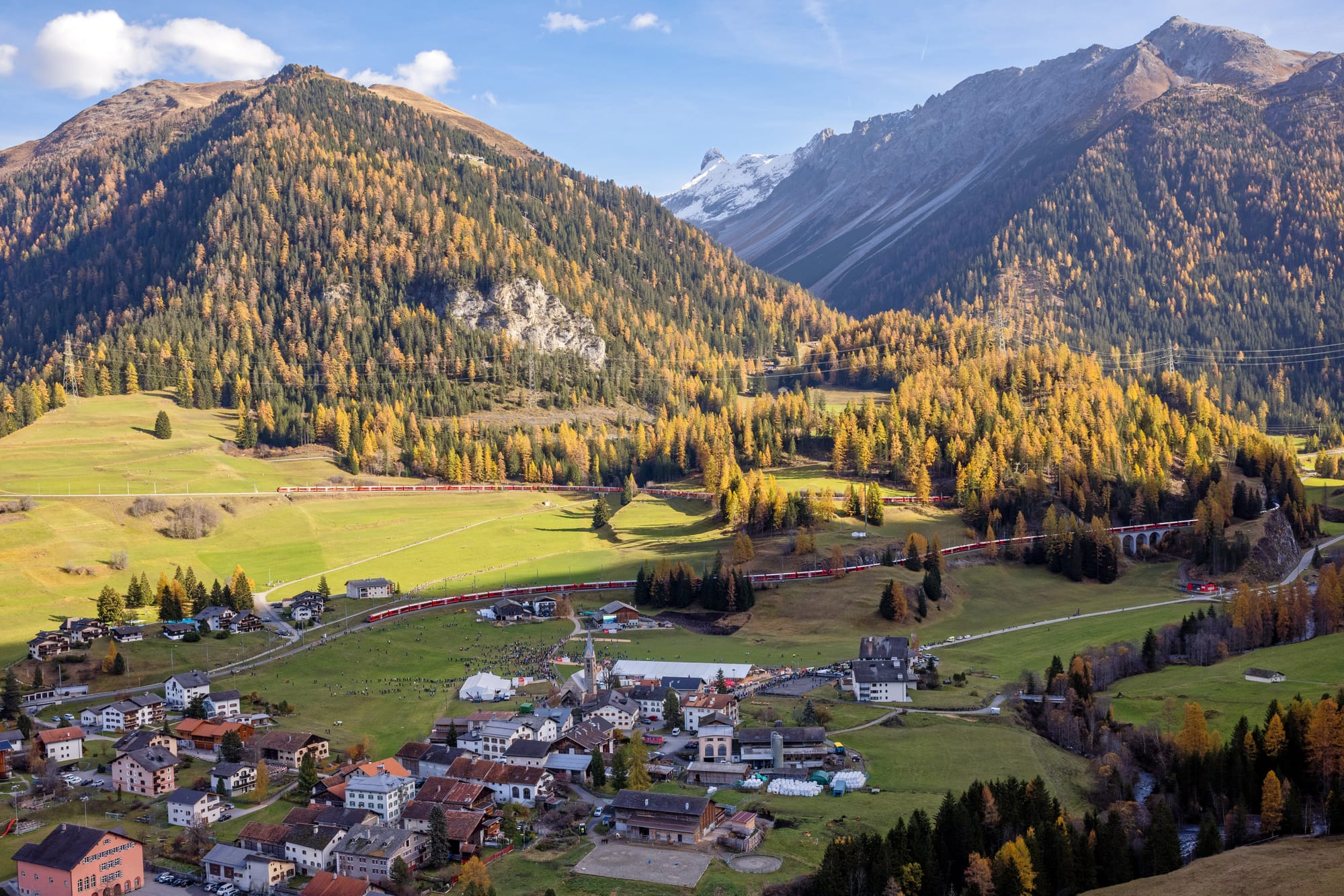
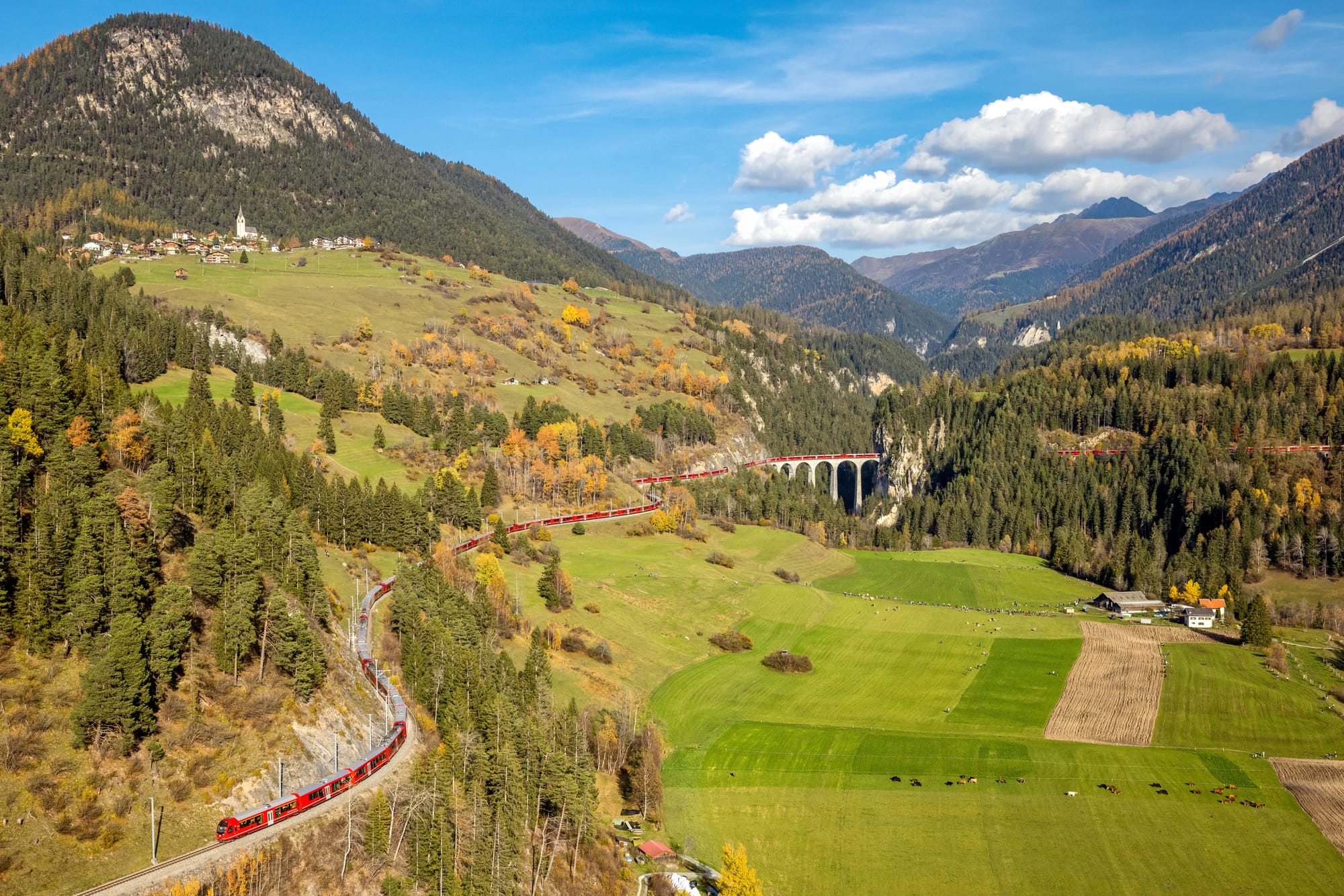
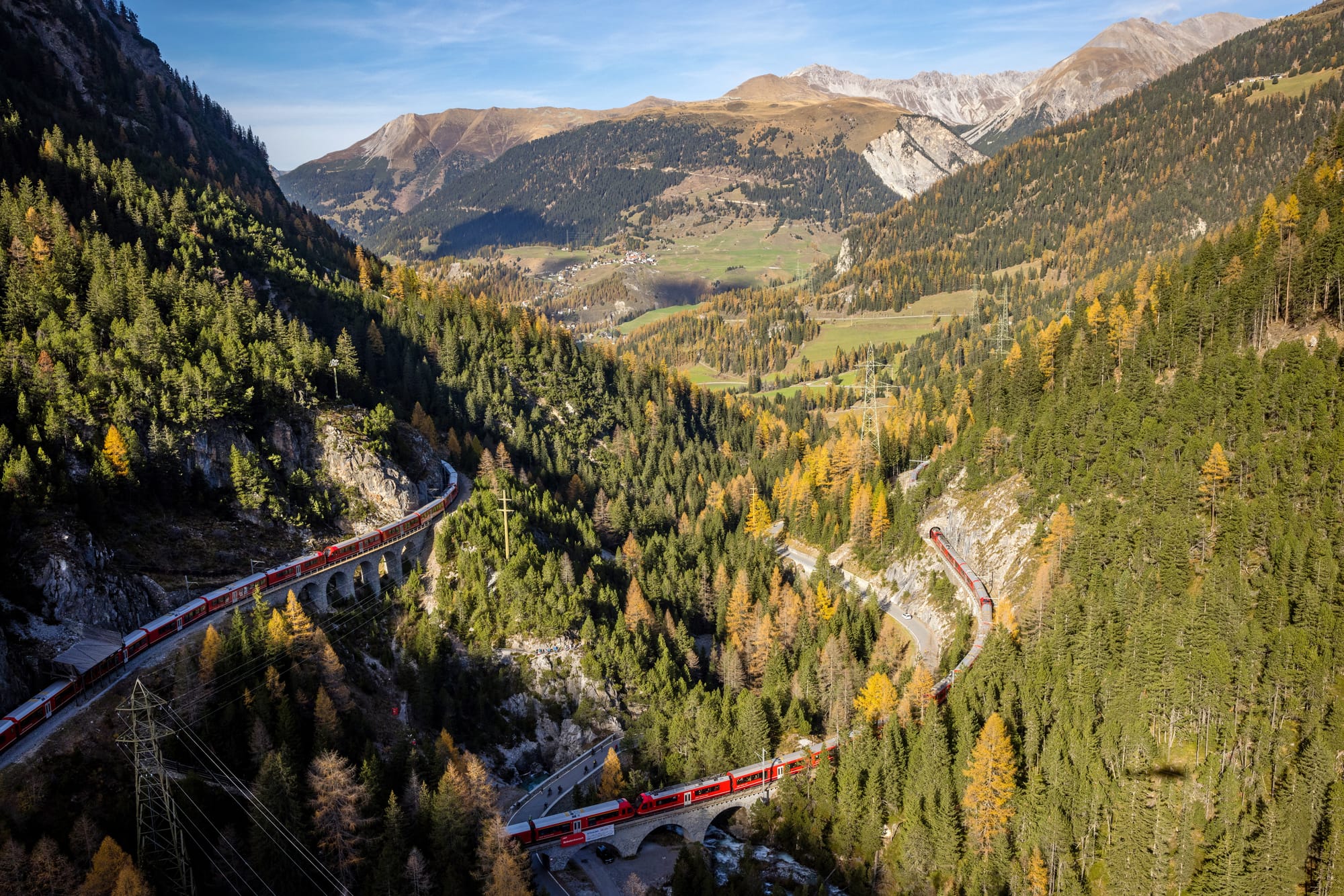
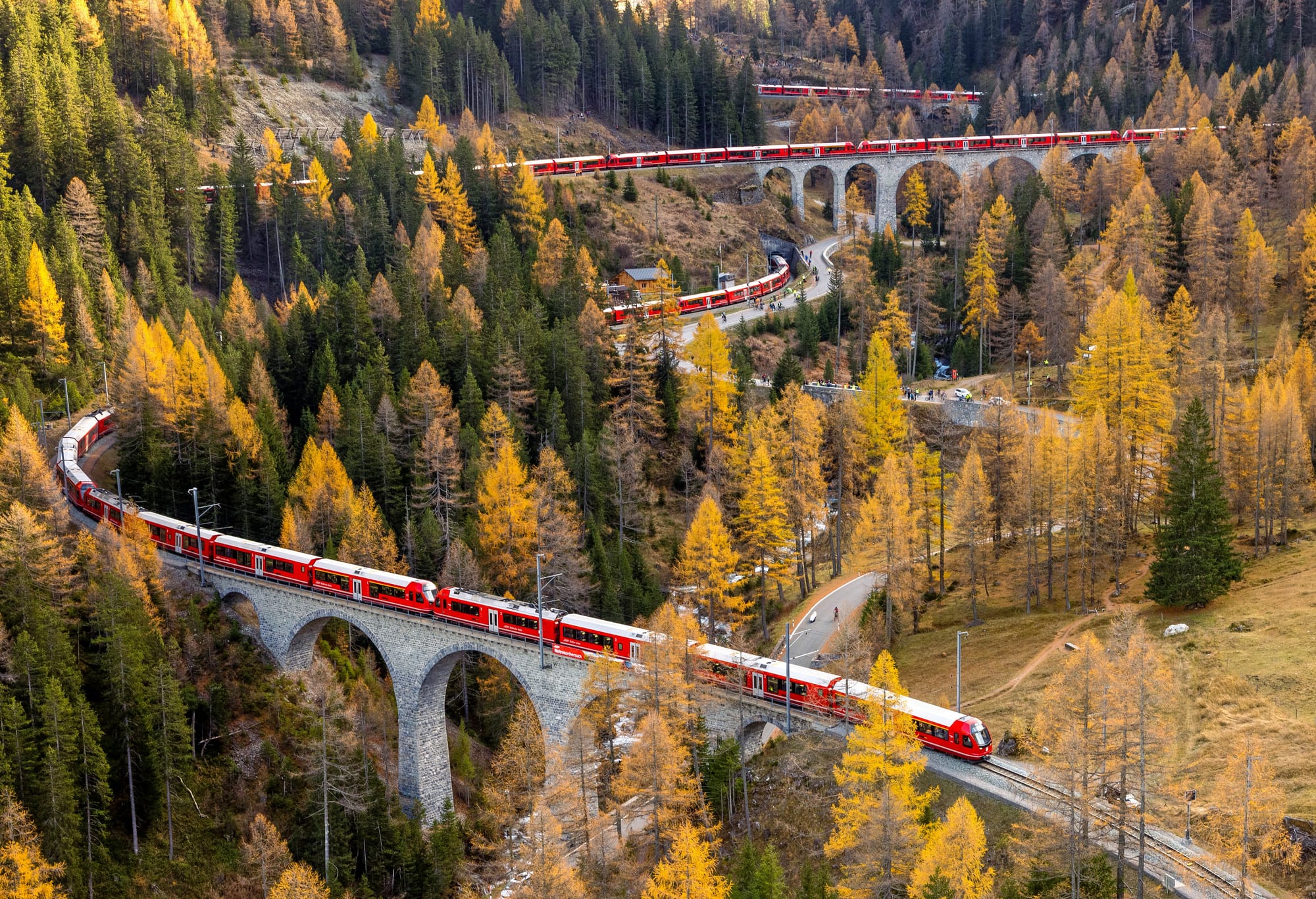
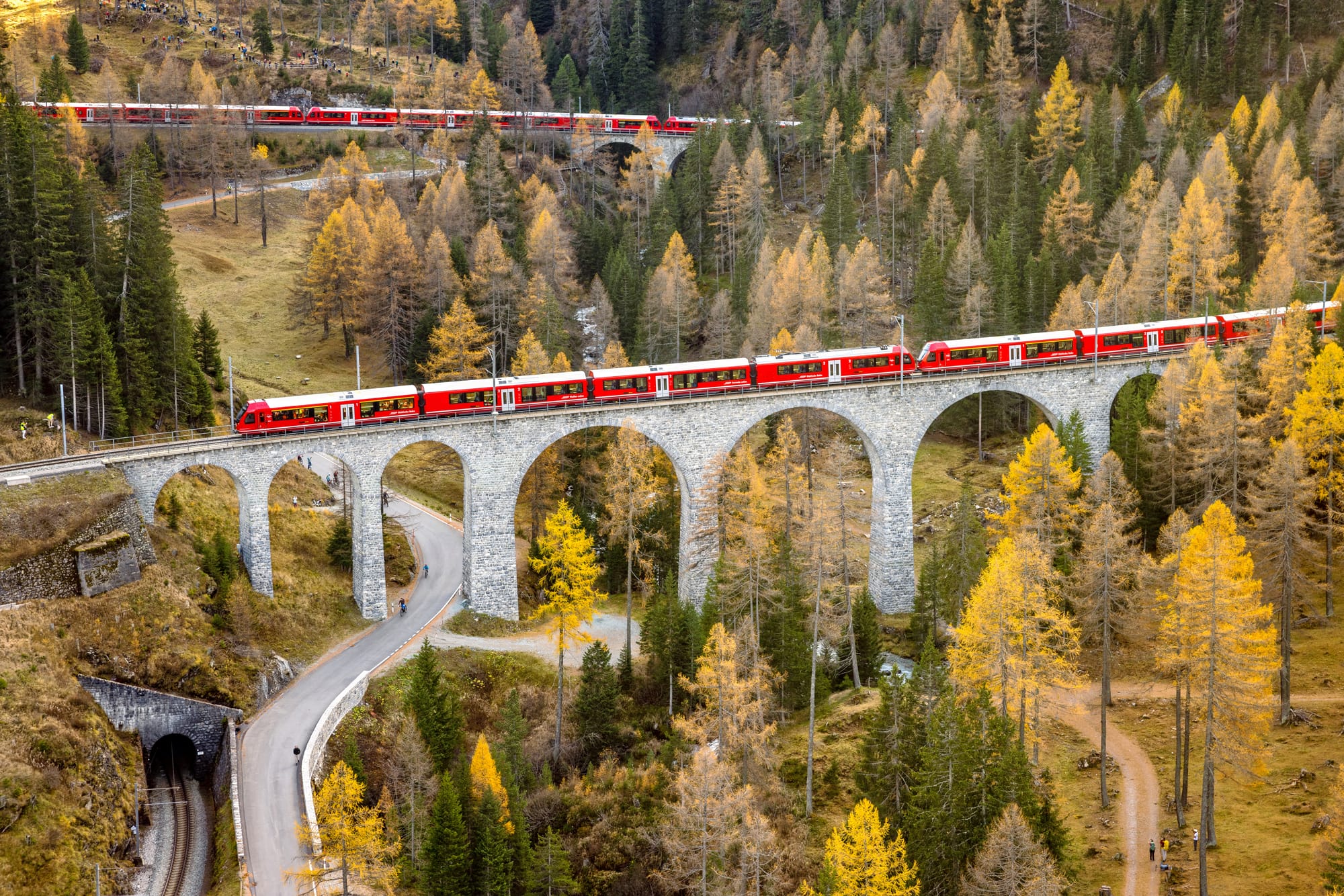
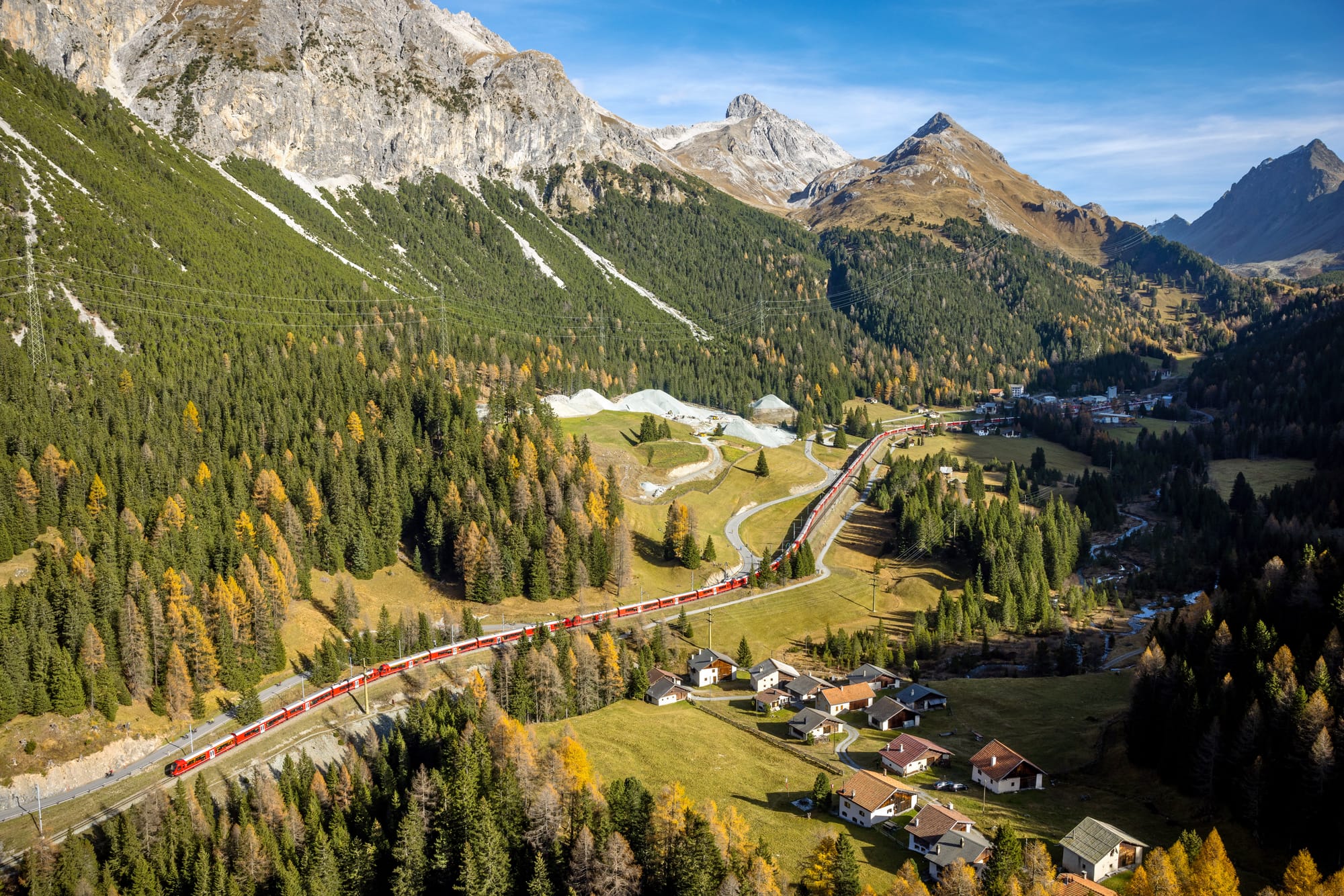
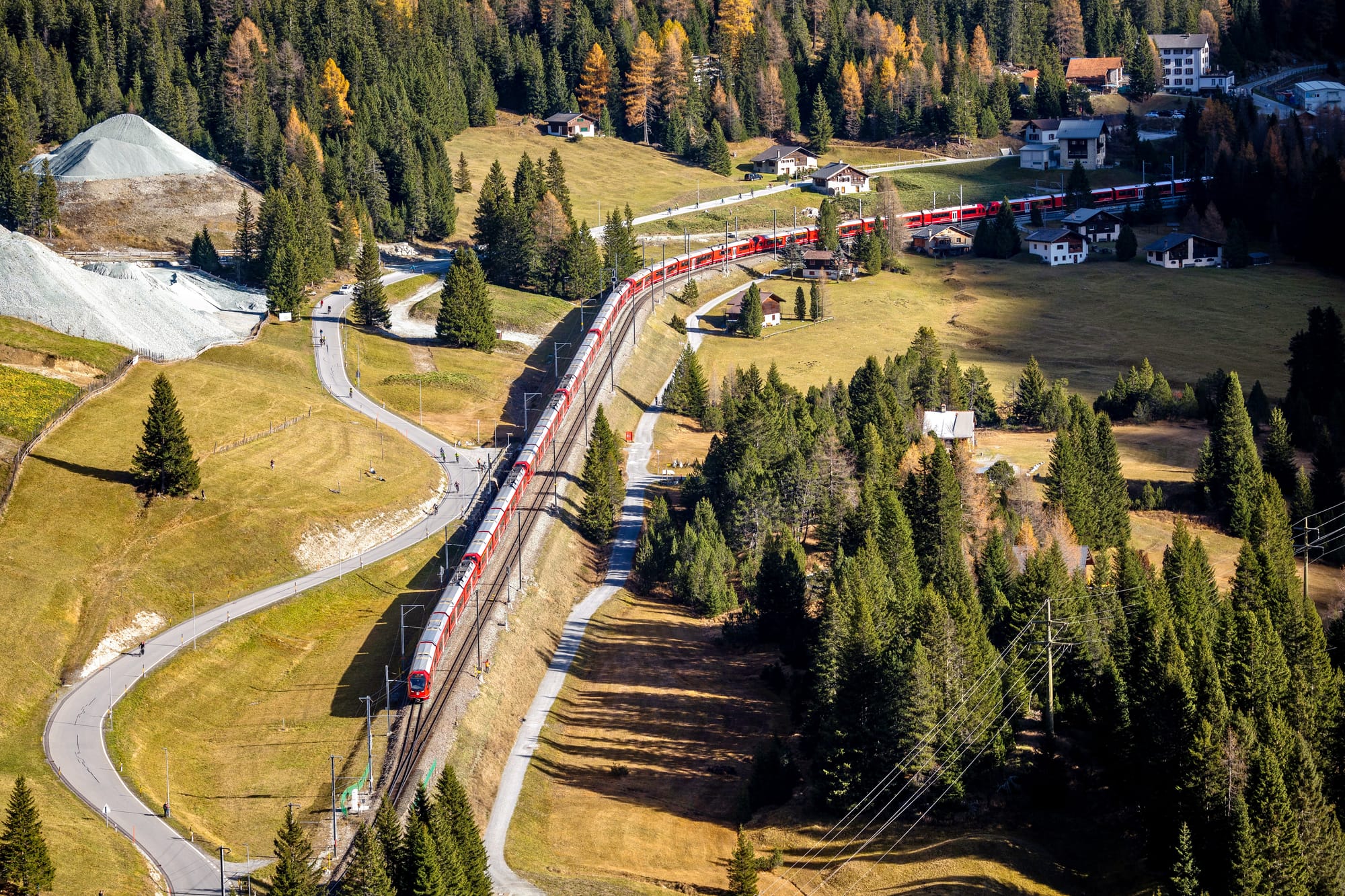
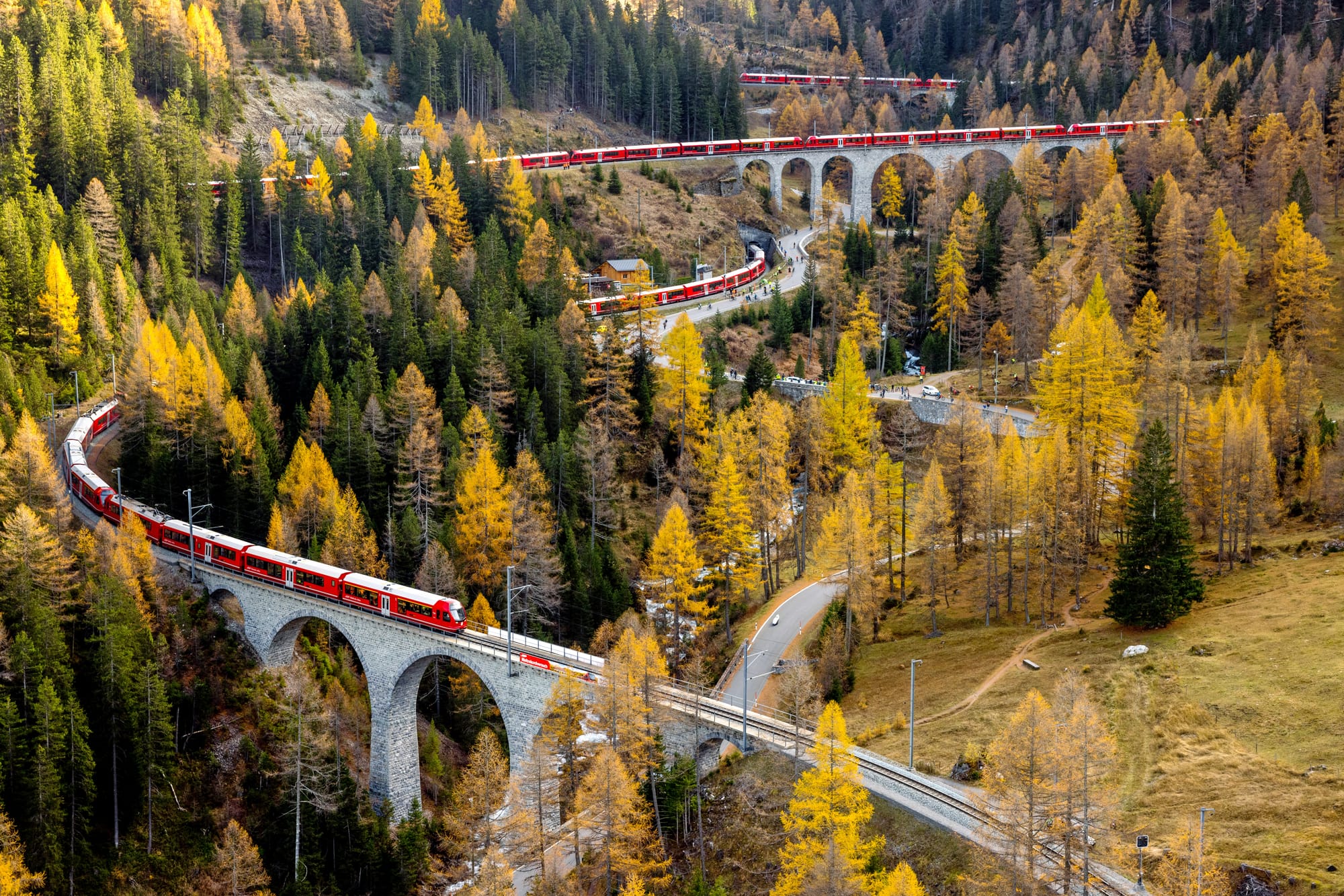
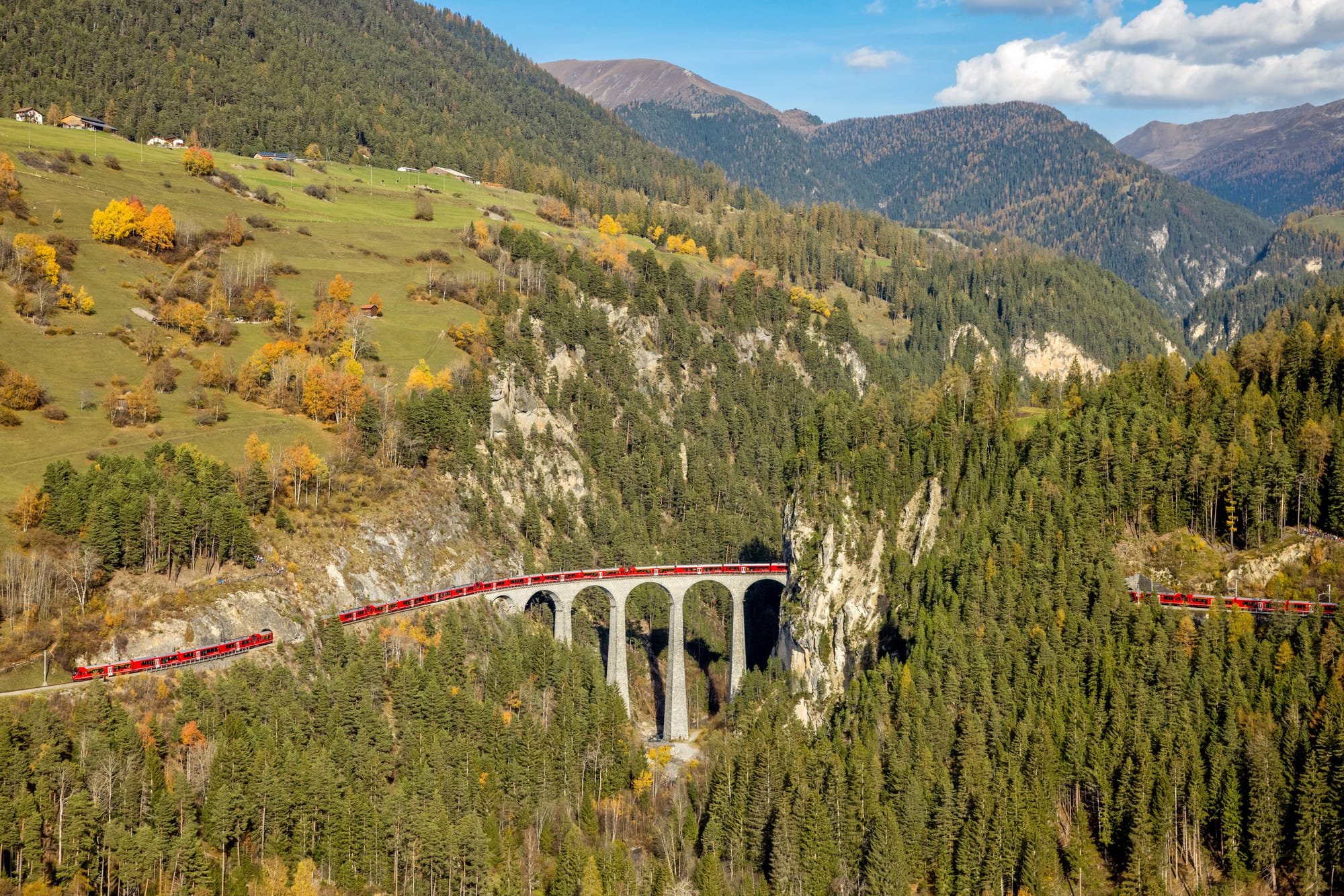

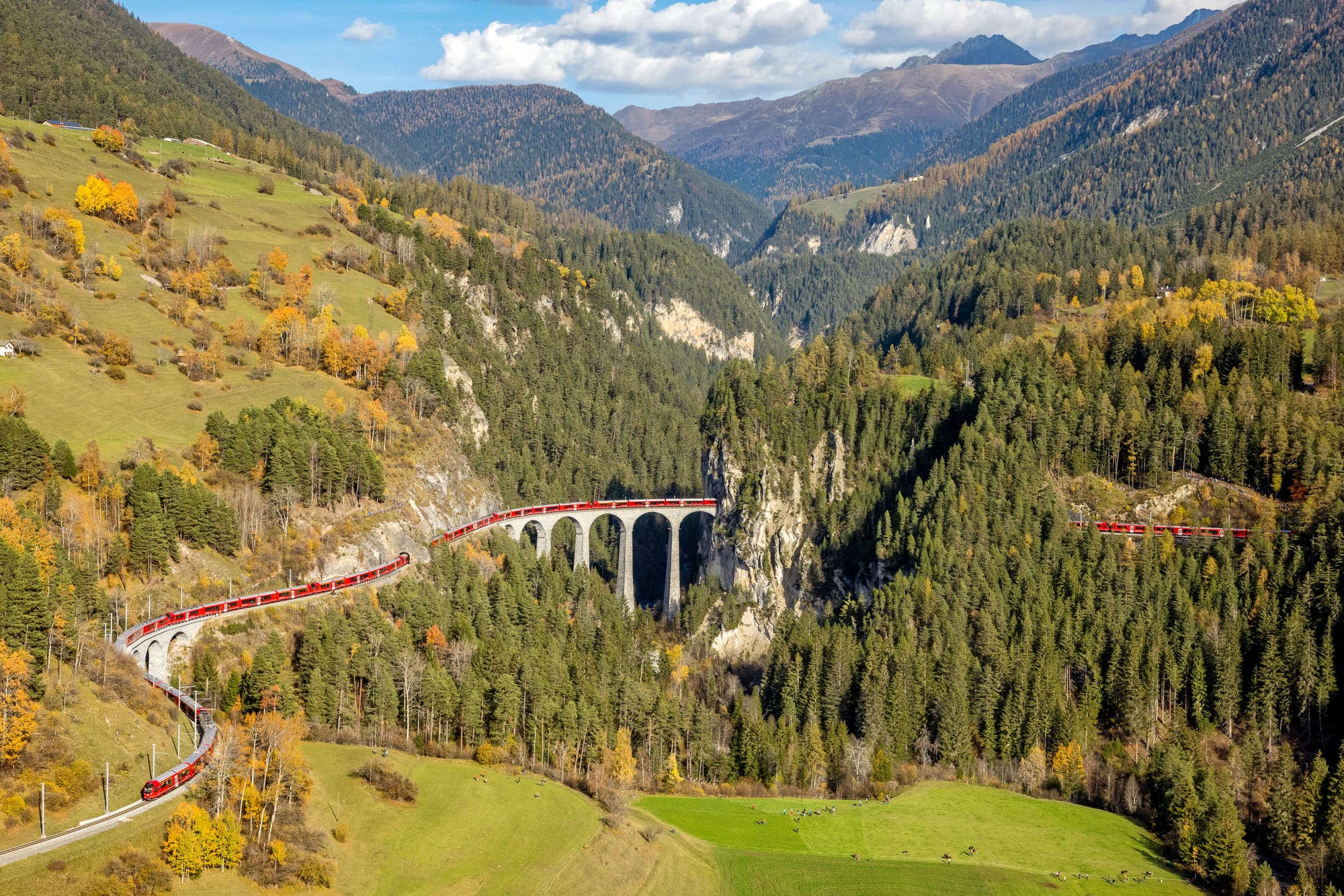
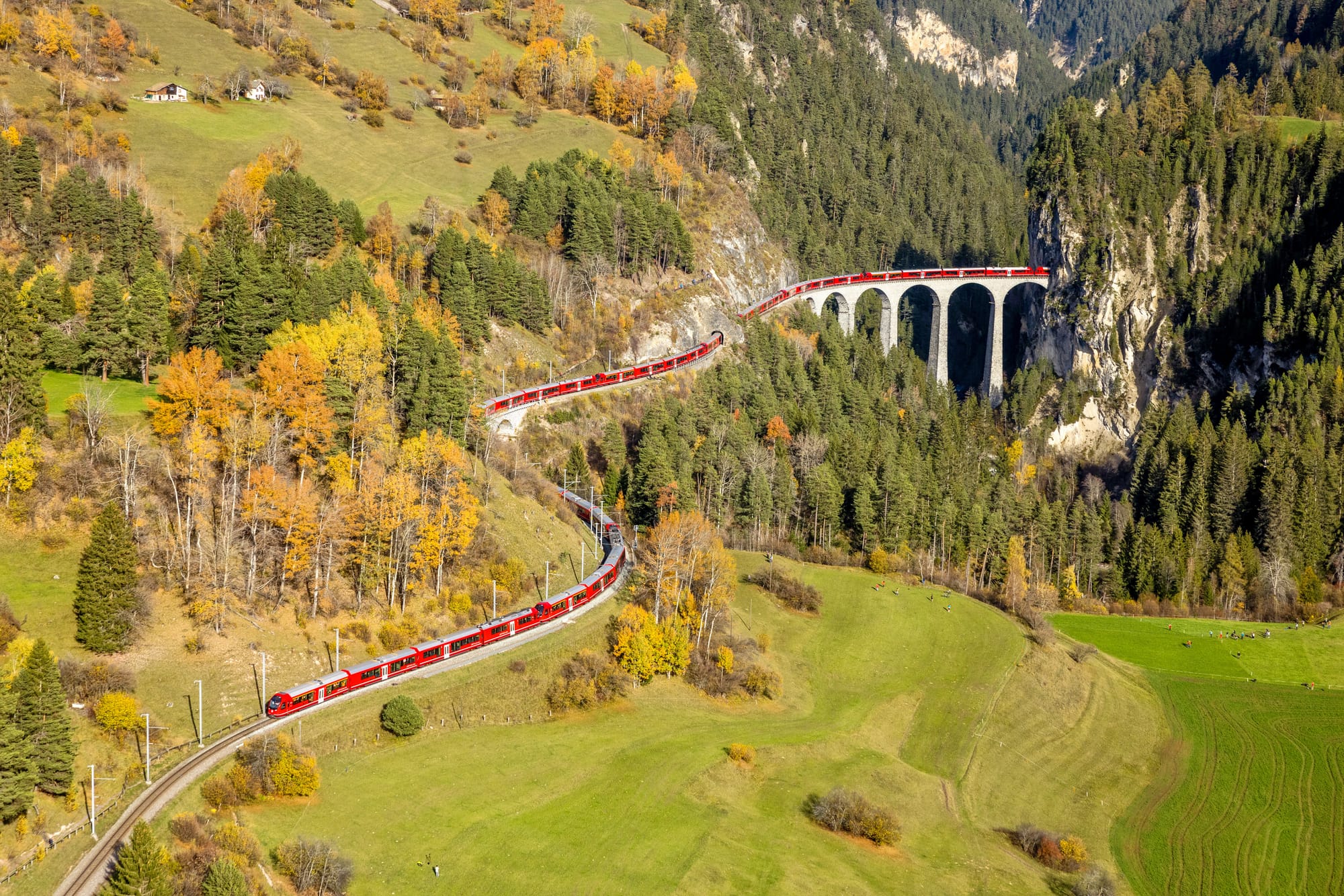
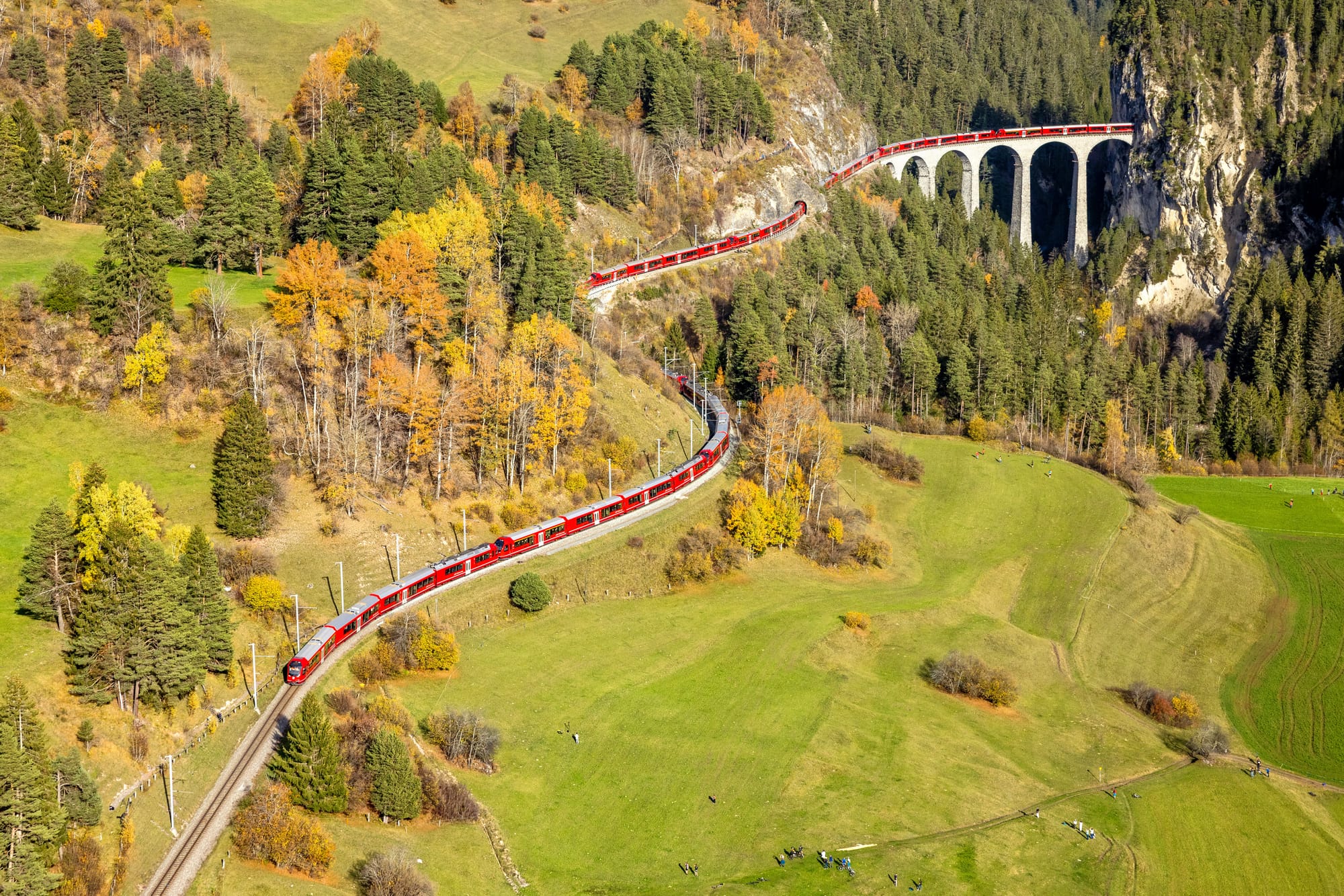
A video with some Highlights (Source: “Blick TV”)
Facts and figures on the world record attempt:
The world record distance from Preda to Alvaneu is 24,930 metres long. - It covers 789.4 metres in altitude (Preda = 1788.7 m above sea level; Alvaneu = 999.3 m above sea level). - The world record train traveled at 30 to 35 km/h. - The record journey took about 46 minutes. - The weight of the record-breaking train was around 2990 tonnes. - The world record train had a total of 4,550 seats, 150 of which were occupied by invited guests. - Communication within the train was ensured by means of an almost 2-kilometre-long field telephone provided by the Civil Defence. - In addition, 7 locomotive drivers and 21 technicians were deployed on the train in order to be able to operate the train. - The Albula tunnel was closed to rail traffic for about 12 hours. Trains did only run as far as Bergün during these 12 hours. During the world record attempt, the line was closed to rail traffic for about 2 hours between Tiefencastel and Bergün.
Technical challenges: Never before has such a long passenger train run in the world, let alone in the high mountains on a narrow-gauge railway with tight curve radii, many tunnels and viaducts. This resulted in various challenges that had to be mastered in advance and during the journey.
Synchronous control train formation and management of braking forces: The 25 trains all had to accelerate or decelerate at the same time, although only four trains at a time could be controlled from the same driver's cab. An electric loop ensured that all trains brake simultaneously in case of emergency braking. Due to the heavy weight of the train (2'850 t without passengers), very high forces acted on the infrastructure and car bodies if parts of the train did not behave synchronously. A separate intercom system in the train, training of the drivers and clear commands ensured the appropriate result. In addition, special software was loaded and the mechanical braking power was reduced for the journey of the record-breaking train.
Recuperation and effects on grid load: On the downhill run, the train was braked completely via electrical recuperation. This produced electricity that was fed into the overhead line and could be used by other trains on the RhB network (but also by other railways in Switzerland and abroad). In addition, the surplus electricity could also be fed into the public grid (e.g. in Bever) via converters. The big challenge was that the voltage of the overhead line could increase too much (normally 11,000 volts), as 25 trains were delivering power synchronously in the same section. The overvoltage could not be absorbed by individual systems connected to the traction current. Various tests have been carried out and measures were being taken for the record run (e.g. restriction of speed and acceleration, reduction of recuperation through special train software, preventive rewiring of systems to local network power supply).
Connection of the trains: The individual 4-part partial trains (Capricorns) were connected with a fully automatic coupling. Four trains each were controlled by one driver. Coupling between four Capricorn trains is mechanical and pneumatic, but not electrical. For this purpose, additional safety control lines were laid between the trains.
Ensuring safety and availability of track and systems: The track was closed to other trains for the record run. The record train was partly longer than various block sections. The journey was controlled from the operations centre in Landquart. It had to be ensured that the signals, but also the level crossings and customer information were triggered at the right moment.
Live media production: The record run was recorded (by Blick) by means of a live production and distributed via various channels. For this, a wide variety of cameras from drones, in the driver's cab and on the track were used and had to be processed in real time. This alone was a big (and exciting) challenge on a track with limited mobile phone coverage.
